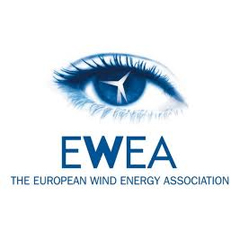In this exclusive dispatch, Julian takes a look at the wind industry’s contribution to EU GDP and argues that ‘Green Growth’ is central to recovery – and growth.
Europe is in crisis. The economy has entered the slow lane. Jobs are vanishing. Yet Europeans are paying €700 per person per year to countries such as Russia and Algeria. Why? Because the EU depends on them for both gas, and on Russia for oil and coal as well. Like addicts, we eagerly hand over our money to potentially unreliable suppliers of polluting – and ever more expensive – fossil fuels. Yet we have our own source of energy which is clean and inexhaustible. A source of energy that creates exports and European jobs, that doesn’t pollute or have to be imported, that Europe has in abundance: the wind.
Wind energy has now become a major European industry. As industries stagnate across the economy, wind energy could contribute to economic growth. ‘Green Growth – the impact of wind energy on jobs and the economy’, a report published by EWEA at its 2012 annual event in April, shows that in 2010, wind energy’s growth rate was twice that of EU GDP. In the four years from 2007 to 2010, its contribution to EU GDP went up by 33% to reach €32.43 billion. And it is still climbing.
That growth also means more jobs can be created by wind energy – so far some 240,000 are employed by the wind industry in Europe, including those created indirectly in other sectors. EU unemployment has been rising, but wind energy jobs in Europe went up by 30% from 2007 to 2010.
Wind energy has an impact on other sectors, both in terms of job creation and in giving them business. Every Euro spent in the wind industry generates €0.28 in the metal sector and €0.13 in the electric and electronic product manufacturing sector, for example, says ‘Green Growth’.
Wind energy is also a net exporter: in 2010, the products and services from the European sector which were used outside left Europe brought in €5.7 bn. And when you have wind energy, you need less fuel from other countries: wind saved the EU €5.71bn on fuel in 2010.
In the future, the economic benefits of wind energy will become ever more marked. The wind industry’s GDP will increase almost three-fold over the decade to reach nearly €94.5bn by 2020. During the following decade, it will almost double to reach €173bn by 2030, finds the report.
This means relatively speaking, that the sector’s percentage of EU GDP will continue to increase, reaching 1% by 2030. This would make the wind industry the size of the “18th EU Member State” – just below Romania, and just above Hungary – in terms of its contribution to GDP, in 2030.



























